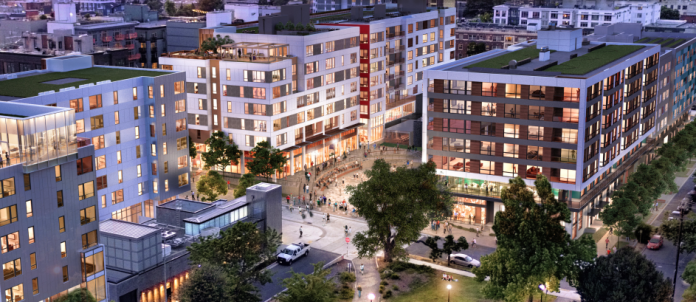Earlier this month, the Office of Planning and Community Development (OPCD) in conjunction with the Seattle Department of Construction and Inspections (SDCI) held an open house on updating Capitol Hill’s neighborhood design guidelines. The design guidelines update follows on the heels of updated design guidelines adopted in July specific to the Pike/Pine precinct within Capitol Hill: these guidelines tackle the rest of the neighborhood.
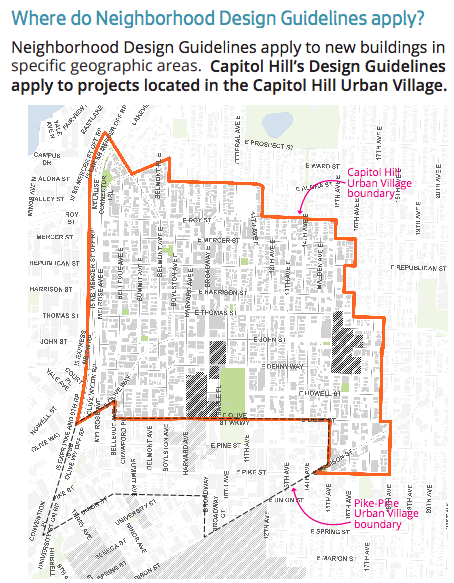
The city is pursuing an update to the neighborhood design guidelines for several reasons:
- Significant neighborhood-wide zoning changes are on the way as part of the city’s Mandatory Housing Affordability program
- Light rail has opened up on Capitol Hill creating an opportunity to rethink design as it relates to transit access
- The Capitol Hill EcoDistrict has pushed the neighborhood toward new livability and ecological goals
- Changes to citywide design guidelines have made some neighborhood guidelines out of sync or redundant, and finally,
- The neighborhood has a robust forum for community design through the Pike Pine Urban Neighborhood Council and the Capitol Hill Community Council.
On top of that, there has simply been a lot of change in the neighborhood since Capitol Hill’s design guidelines were first adopted in 2005. The last update in 2013 was comparatively narrow in scope to this intended update.
The Capitol Hill design guidelines apply to the entire neighborhood, except the Pike/Pine corridor where the previously approved Pike/Pine design guidelines take precedence. Citywide design guidelines also apply to provide high-level guidance whereas the Capitol Hill design guidelines provide more fine-grained details on how to respond to local development patterns and objectives.
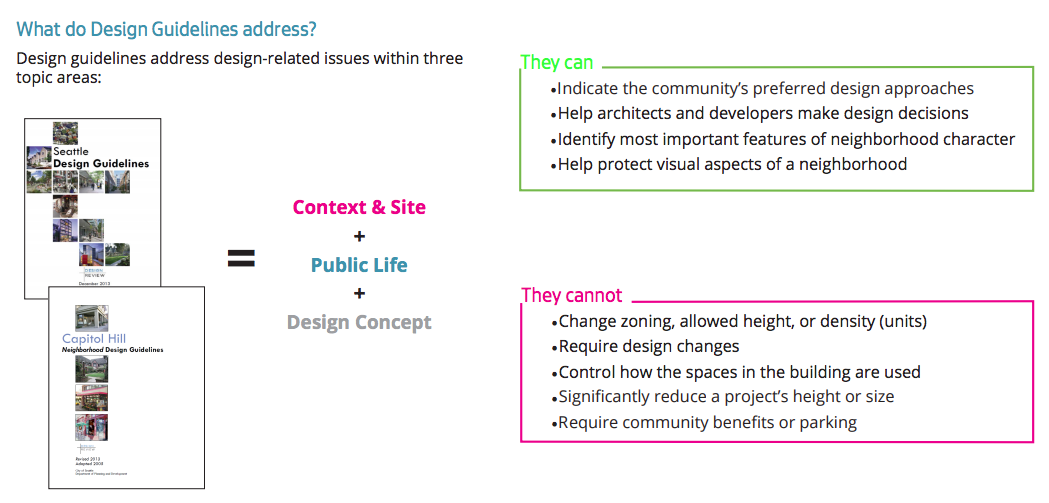
However, design guidelines don’t apply to every project. The city has specific thresholds for design review, which is where design guidance comes into play from a regulatory standpoint. However, utilizing the design guidelines is encouraged whether a development is undergoing design review or not. Generally, mixed-use, commercial, multifamily, and townhouse developments are subject to design review and by extension these design guidelines.
Design guidelines serve to help realize local objectives in communities and improve quality of life through the built environment; they aren’t meant to reduce overall development capacity. Seattle’s general approach to design guidelines can be broken down into three general topics: context and site, public life, and design concept. The structure of the Capitol Hill Neighborhood Design Guidelines reflects this approach.
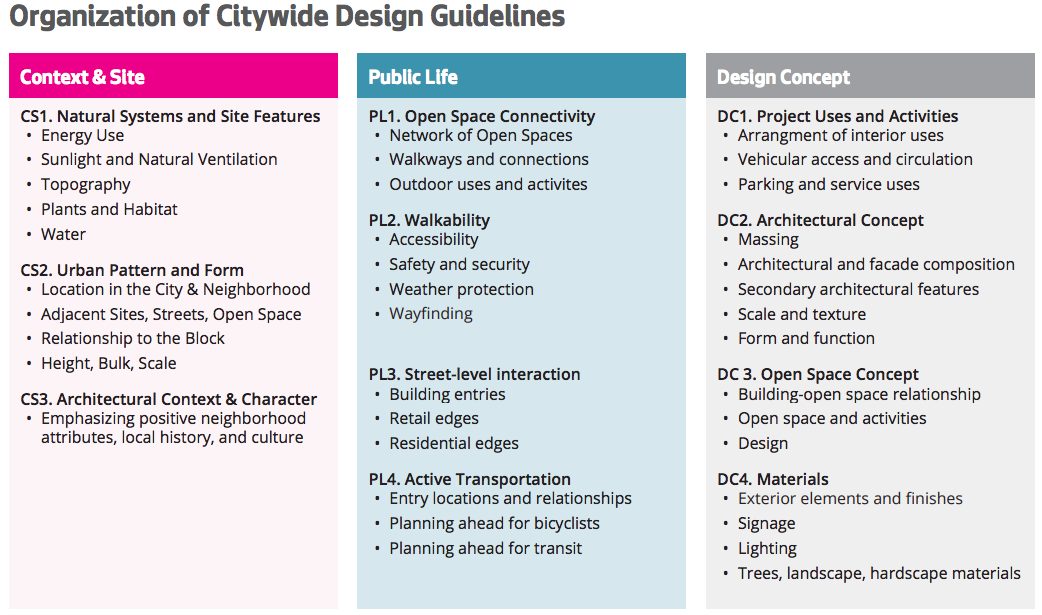
Earlier this summer, OPCD and SDCI worked with a volunteer to focus in key themes to review as part of the design guidelines update. These included: storefronts, architectural mix, building shape and form, street-level residential, building materials, arts and culture, landscaping, character buildings, and facade details. The open house primarily centered on soliciting preferences by stakeholders on these different themes.
For instance, for building shape and form, OPCD and SDCI provided six images of different development designs and explained the distinguishing features. Respondents were asked to select two developments that were desirable and then provide any additional relevant feedback.
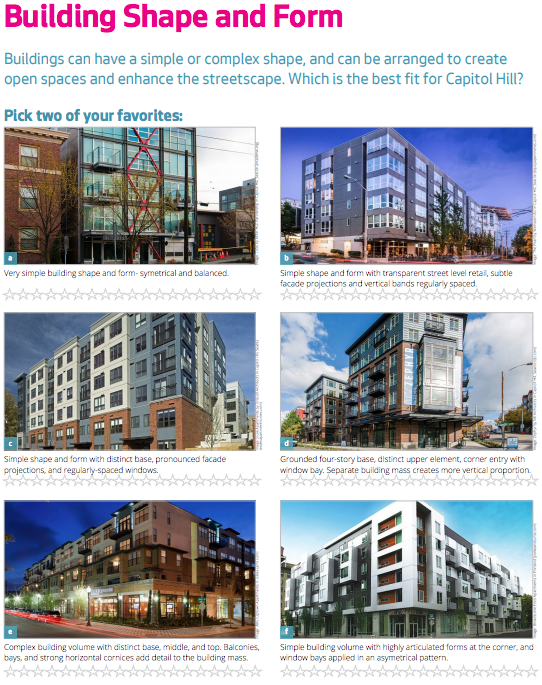
Draft design guidelines are expected sometime in mid-spring 2018. Prior to that, OPCD and SDCI will hold another round of work group meetings with key stakeholders and a general community meeting. Later next year, the city council’s Planning, Land Use and Zoning Committee (PLUZ) will take up the guidelines before they move onto full council for approval.
Stephen is a professional urban planner in Puget Sound with a passion for sustainable, livable, and diverse cities. He is especially interested in how policies, regulations, and programs can promote positive outcomes for communities. With stints in great cities like Bellingham and Cork, Stephen currently lives in Seattle. He primarily covers land use and transportation issues and has been with The Urbanist since 2014.


